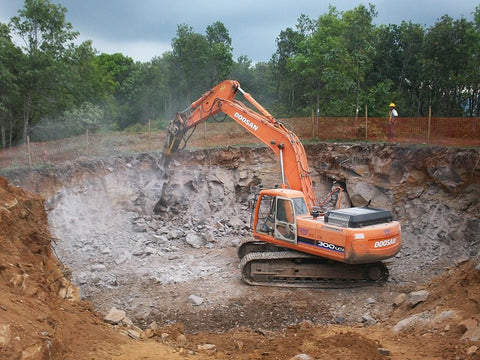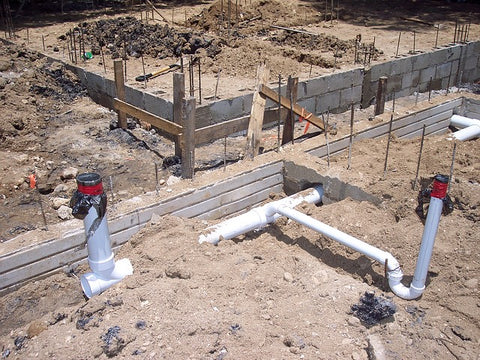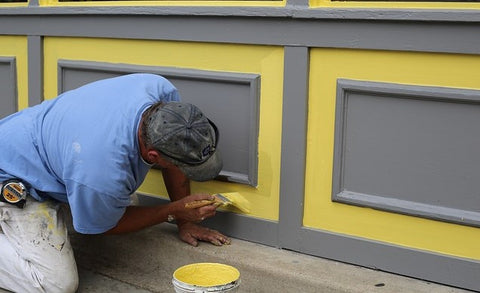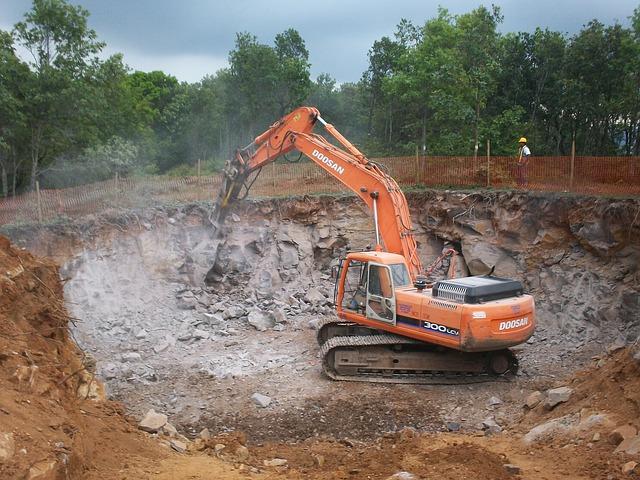
A perfect understanding of the basics of building construction is the first step to a successful construction project.
Constructing a building is puzzling regardless of the type of building. Aside from the time, efforts, and investment involved, care should be taken in planning the purpose of construction and its use.
Hence, it is agreeable that the process of constructing a building starts with its plan.
We’ve laid out a step by step process of constructing a building from start to finish in this article. They’re important steps to use in planning your housing project efficiently and in a better way.
We aim to provide you with a better understanding of construction in a simplified manner. And have categorized them into two parts; the pre-construction stage and the construction stage.
Building Construction Process Step by Step
The Pre-Construction Stage
- Building plan
- Budget estimation
- Land acquisition
- Documentation
The Construction Stage
- Site clearing
- Foundation
- Plinth beam or slab
- Superstructure
- Brick masonry work
- The lintel
- Roofing coating
- Electrical and plumbing
- Exterior and interior finishing
- Flooring
- Painting
The Pre-Construction Stage
1. Building plan
Your building plan is the most crucial aspect of building construction. When you are about to embark on a large-scale project such as constructing a building, it is vital that you lay out a plan for your building.
The reason is that it helps you to anticipate the features and functions of different parts of your construction process. You need a team of professionals to carry out this task to achieve the best results. Architects, civil engineers, electricians, and plumbers play an essential role in planning a successful building construction project.
2. Budget estimation
Constructing a building is a considerable investment, which involves setting aside a specific budget. After planning is done, the details are given to a building estimator to carry out a survey and estimate the cost of materials, types of machinery, and labor required to complete the building project.
The cost of materials will be determined by the quantity and quality of fabric needed. At this stage, if the financial capability is limited, it is advised not to proceed further or get a loan from financial firms. Otherwise, there might be a cash crunch situation.
3. Land acquisition
Another essential requirement in setting up a building is to acquire a piece of land. Since science and evolution haven’t innovated ways to defy gravity and build houses and factories on air, we stick to the old ways of constructing a building on the land.
It’s important to put several factors in mind; the size of the building, location, and so on. The size will determine how large the required piece of land should be. As for the location, it is important to build a factory or industry closer to where its raw materials are available – to save the cost of production.
4. Documentation
Thousands of buildings are demolished every day due to a lack of appropriate evidence and documents as proof of ownership. To avoid circumstances like this, secure the authorities' permission and get registered when you’re about to embark on a building construction project.
Ensure that you obtain a document showing the transfer/purchase of the acquired piece of land acquired adequately appended by the transferor and legal authorities in your locale.
Documents required might include but are not limited to, land survey report, land soil test report, land purchase/transfer document, architecture drawings, structural report, and certificate of undertaking by a civil engineer.
The Construction Stage
1. Site clearing

The designated land area meant for constructing a particular building is known as a ‘site.’ In situations where the piece of land has been abandoned for a long time, it’s likely to have trees, weeds, and debris on the land. The first thing to do here is to get rid of such items that might obstruct construction.
On a large piece of land that cannot be cleared using crude implements, you can hire companies in charge to operate bulldozers, excavators, or land mowers to do the job.
2. Foundation

The foundation is the lowermost part of the building where the building meets the soil. It constitutes part of the building's invisible structure. There’s no underestimating the importance of erecting a solid foundation for a building.
It is the most crucial part of building structure because the other parts of the building rely on the foundation's strength to hold. If the foundation is weak, it will collapse someday no matter the quality and quantity of materials used to erect the building.
Construction engineers understand this aspect. Hence, they put in their best effort in terms of material and human resources to ensure that the foundation is strengthened to the peak.
3. Plinth beam and slab
Upon successfully constructing the foundation, another reinforcement known as the “plinth beam and slab” is added to the top. The purpose of reinforcing the foundation with the plinth beam and slab is to protect the foundation from dampness and prevent its cracks from reaching the wall. It will help the foundation to remain strong in the event of an earthquake.
4. Superstructure
A superstructure provides support for the beam and slab. Members of the superstructure include the column designed to strengthen the load mounted upon the building's foundation. The columns are constructed up to the slab level and frame for further construction. A waterproof coating is added to stop water from entering the slab and casting.
5. Bricklaying

This is where the visible portion of the building is constructed. Depending on the owner's choice, different kinds of blocks or bricks can erect the building walls. Materials such as concrete blocks and fly ash bricks are used according to the structure laid down by the architect in the building plan.
The cement mortar mixer is used to mix cement and sand used to hold the bricks together as they are arranged by the masonry. The structure of the windows and doors are carved out by the masonry when erecting the building wall.
6. The Lintel
After erecting your wall, the lintel is built on top of the wall. Like the plinth beam and slab, a lintel is a beam placed across door and window openings. It is used as a support for the load of the structure placed above it.
7. Roof coating
The load that the lintel supports is the roofing structure. Roof refers to the framing of the uppermost layer of the house to shape covering, protection from harsh weather, and decoration and beautification.
The building is taking shape at this level, and you can tell what dimension the building will look like. Different types of roofing materials can add decoration to your home.
8. Electrical and plumbing

Modern homes have their wires and pipes hidden away from sight. This is because they were installed at this stage of building construction and hidden between the walls and slabs; only the endpoint of the pipes and sockets are visible.
9. Exterior and interior finishing
Plastering work commences after electrical and plumbing work has been completed. A mixture of cement and sand is used to plaster the exterior part of the building. It is coated with a thickness of 13 mm and sometimes about 20 mm thickness.
Plastering can make the building structurally strong, protect it from the effect of weather, and make it look attractive. The interior design is done by experts according to the procedure laid by the architect.
10. Flooring
At this point, the building construction is coming to an end. Flooring works begin after the exterior and interior décor is completed. There are various types of flooring according to their uses, economy, and required level of finishing. Ceramic tiles, vitrified tiles, clay tiles, granite, marble, wood, and epoxy flooring are some of the best options.
11. Painting

This is the final work on a building. Painting is used to beautify the building and protect is from the effects of water and sun.
Latex paints are highly water-resistant. Hence, they are favorites for painting the exterior wall of homes. For decoration, a perfect mixture of different colors while painting can magnify the beauty of a building.
Conclusion
Constructing a building is a large-scale and lifetime investment. This is why the real estate business is one of the most significant investments ever. The demand for housing will continue to increase as the population of a given area increases. Therefore, it is crucial to meet this demand with an equilibrium amount of supply of housing facilities.
This guide has provided an insight into what it takes to construct a building. Whether it’s a home, office, company, event and tourist center, or shopping mall, most buildings pass through the construction processes mentioned in this article.






49 comments
Sachin B Rajput
We are searching for project to construction building and road layout metrial supply of Bangalore Mumbai
RichardGlype
Limited to collector-focused releases, this timepiece attracts discerning collectors worldwide.
Cosmograph Daytona Rainbow photo
The meticulously set gems on the outer ring creates a spectrum that enhances visibility .
Powered by Rolex’s self-winding chronograph movement , it ensures seamless functionality for professional timing .
More than a watch , the Daytona Rainbow celebrates Rolex’s innovation in its entirety .
Josephdet
Les plateformes doivent offrir des outils comme l’auto-exclusion pour prévenir les risques de dépendance.
Il serait utile de limiter les sessions en solitaire et de alterner avec d’autres loisirs pour garder l’équilibre .
888starz.ci
Avant de parier , vérifiez vos émotions et refusez de jouer en colère pour éviter les choix impulsifs.
Les guides disponibles sur les sites aident à comprendre des addictions et recommandent des aides.
rolex-submariner-shop.ru
Часы оснащены вращающийся безель , Oyster-корпус , обеспечивающие герметичность даже в экстремальных условиях.
Дизайн включает светящиеся маркеры, стальной корпус Oystersteel, подчеркивающие спортивный стиль.
Хронометры Ролекс Субмаринер купить
Механизм с запасом хода до 3 суток сочетается с перманентной работой, что делает их идеальным выбором для активного образа жизни.
С момента запуска Submariner стал символом часового искусства, оцениваемым как коллекционеры .
RobertBrurl
Используйте продвинутые инструменты для анализа цифровых следов в открытых источниках.
Узнайте контактные данные или активность через систему мониторинга с гарантией точности .
глаз бога телеграмм сайт
Бот работает в рамках закона , используя только открытые данные .
Получите расширенный отчет с историей аккаунтов и графиками активности .
Доверьтесь надежному помощнику для исследований — точность гарантирована!
Leave a comment
This site is protected by hCaptcha and the hCaptcha Privacy Policy and Terms of Service apply.